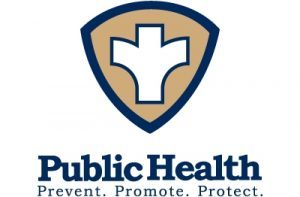by Trish Rudder
The Historic Landmarks Commission (HLC) has tabled a decision on whether or not to remove two contributing structures from the Town of Bath Historic District until its next meeting on September 21.
Member Zachary Salman gave a status report of the historical structures in Bath. He had written a letter to the Bath Town Council on July 5 and a letter to the Historic Landmarks Commission members on July 12 that addressed the issue.
In his letter to the town council, Salman wrote:
“In only two years since the 2021 resurvey, historic architectural design and workmanship have continued to disappear from the Town of Bath Historic District at an even faster speed than during the previous decade.
“…The primary purpose of historic preservation is to conserve the physical evidence of our history… every piece of authentic material or design intent that gets removed from the Town of Bath Historic District degrades that historical narrative and threatens the town’s viability as a destination for experiencing history,” Salman wrote.
In his letter to the Commission members, he wrote:
“As the commission tasked with protecting and preserving the physical evidence of local history, it is the duty of a Historic Landmarks Commission to take action when the integrity of the community’s historic fabric is threatened, damaged, or destroyed.
“By participating in the National Park Service’s Certified Local Governments (CLG) program, the Town of Bath has a commitment to protect the integrity of the Town of Bath Historic District according to the Secretary of the Interior’s Standards for the Treatment of Historic Properties, the national standards universally adopted by state and local governments across the United States and uniformly applied to guide and judge the rehabilitation of historic structures,” he wrote.
Salman said that two contributing structures in town no longer qualify to be included in the historic district. One is at 79 South Green Street and the other is at 175 Wilkes Street, he said.
Mayor Scott Merki was in attendance to address the July 5 letter from Salman to the Bath Town Council. He asked Salman why the structures needed to be removed from the list.
Salman said the HLC needs to take action when historic materials are removed from properties.
He said his letter recommends why the two structures are no longer viable as historic.
Salman said he needs all the members to read his July 12 letter before voting on the structures’ removal from the historic district list, in which he wrote:
“Since May 2021, multiple destructive renovations have taken place within the Town of Bath and further threatened the viability of the Town of Bath Historic District’s listing on the National Register. To continue to recognize these properties as contributing sets the adverse example that this type of disregard for the conservation of the historic district is acceptable and that the Town of Bath is unable to hold itself to a meaningful standard of historic preservation,” Salman wrote.
The decision to remove the two properties from the historic list was tabled until the next meeting, Mason said.
Salman agreed that this would give the members time to read his letter so that everyone would be on the same page before voting.
COA rules resurface
Property owner Charles Webster spoke to the Historic Landmarks Commission to talk against putting Certificate of Appropriateness (COA) rules in place in the Town of Bath.
In May 2021 the Bath Town Council voted against adding the COA provision to historic properties.
Webster had charts showing the economic analysis between larger and smaller municipalities with a COA in place.
One of his observations was “the formal COA structure is more properly supported by areas of greater population and funding.”
Webster, who is working on historic structures in Charles Town, said he wants to get historic property owners together and learn about who can help with structure repair.
Property owner Paul Johanson said he was not aware that COAs were being discussed again. He said he was against them.
Mayor Merki said the town will not approve a Certificate of Appropriateness regulation as long as his advice by the town’s legal counsel is against adding the COA provision.
Salman said on Monday that business owners want some assurance that the historic town will remain historic.
Free preservation incentive training to be offered in October
The Historic Landmarks Commission will offer training in Berkeley Springs by the State Historic Preservation Office the week of October 15.
HLC treasurer Ryan Rebant said at the August 3 meeting said the free training is open to realtors and the public.
It is a one-half day session, and Rebant said he has taken the training before. The HLC will focus on preservation incentives, he said.
“Preserve Your State” training offers preservation incentives, tax breaks, why you should keep certain aspects, such as the property’s integrity and what the national standards are, Rebant said.
HLC president John Mason asked Rebant to pick a day and Rebant will set up space in the Ice House or the Pines.
Brochure printed & will be available
The “Historic Architecture of Berkeley Springs” designed by Salman has been printed and will be sent out to property owners of historic buildings in town and will be placed in rack cards in the businesses in town.
The tri-fold pamphlet shows the different styles of architecture in town and examples of the buildings.
The next HLC meeting is scheduled for Thursday, September 21 at 2 p.m. at Town Hall.






